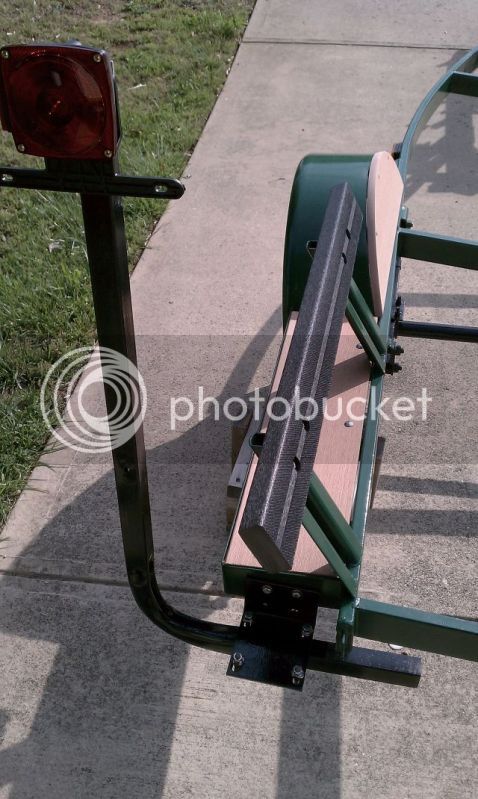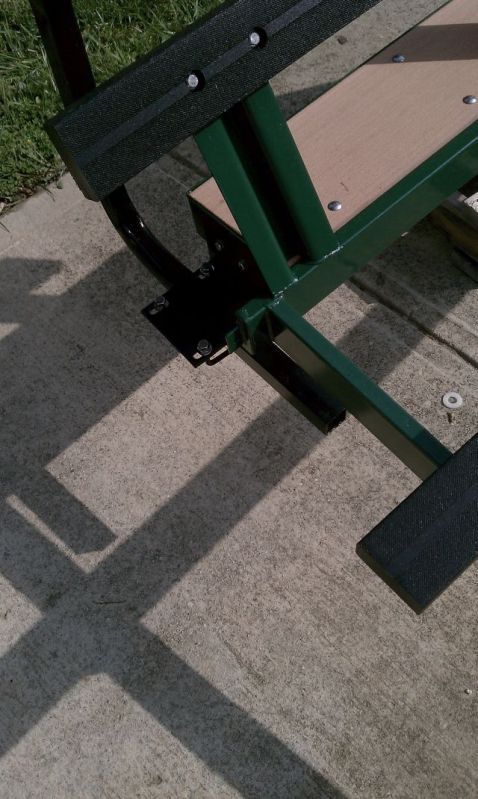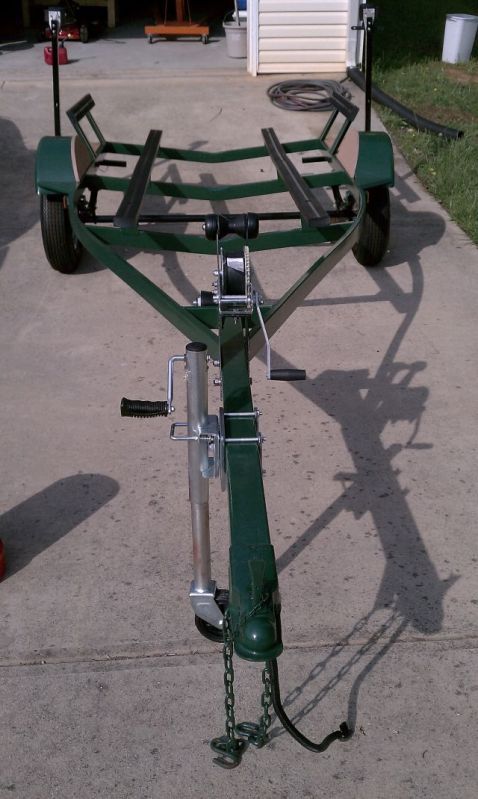It's been a long time since I've been able to work on the boat, trailer or anything. Last spring a year ago, my 90 year old father came to live with us. He's been quite a handful to take care of, as he's suffering from Alzheimer's, congestive heart failure and just plain old age. But after a long hard year, was able to get back to working on the boat or at least the trailer. Got the trailer completed. I apologize this post won't show my normal detail, but there was just too much to get done and it was done as quickly as possible, as I really wanted to get done.
Last anyone knew, I had stripped the trailer down, started sandblasting it and then took it over to a buddy's house to get some welding done for repairs and strengthening. Once that was done, we disassembled everything and dropped it off at a body/auto repair shop to finish the sandblasting and for paint to be sprayed on everything needing paint. My son was with me when I picked it up and helped me assemble the freshly painted axle, springs and such back to the frame to take it home. About that time, Dad showed up and work got busy, so that's where everything sat until this past two weeks.
I got a huge amount of help from my son in law, who was very patient with me during the work, as I was very demanding of him about paying attention to detail and doing a good job. We discovered the painter had done a mediocre job of painting the trailer and several areas had paint worn thin, so we decided to clean up any rust, touch up with Ospho paint prep and repaint with brushes. Doesn't look quite as pretty real close up, but it looks great from five feet away, is thoroughly coated with paint and should last a long time. Here's some pics:
My son in law doing some touch up paint near the front chain and wiring. You can see the keel roller bracket welded in by the trailer factory and one of the bunk supports. The welded-in bracket was made for an 8.5" roller, which are no longer made today and the bunk support only has one hole for a bolt or lag screw.

A pic back towards the rear of the trailer. You can see where my son installed the axle, springs and such using the original stainless steel hardware. I made a decision to paint over that hardware because the old stainless steel had rusted some and needed a coat of paint to protect it. Original springs, u-bolts and such were used. The Rustoleum Industrial paint from Home Depot I used to paint the trailer and axle parts is excellent stuff. Covers in a single coat, is very easy to paint with and looks great when done. At around 30 bucks a gallon, it's a lot less expensive than the boat paints and according to information I received from a very old boat salesman, works just as well or better. Tires and rims are new replacements, as originals were dry rotted from years of neglect and rims would have cost more to restore than using new. Note the support brackets for the side bunks and the tire fenders with the tabs to mount additional side support. Originals were carpet covered wood. I used plastic board I got from Home Depot at a discount, as the original purchaser changed his mind after it had arrived.

A couple of pics of the side bunks and the replacement steps and additional side support. I used ultimate bunk boards in black for the bunks and the plastic wood from Home Depot to replace the original. To shape the plastic wood/boards, I used a contractor saw, the bandsaw pictured earlier and a palm sander to smooth out the bandsaw cuts. To drill holes, I used a small drill press from Harbor Freight. The materials all cut smoothly. All hardware was replaced with new stainless steel.
In this picture, you can see where I drilled and counter sunk to use #6 stainless steel machine screws with lock washers and nuts to mount the side support plastic board through the original holes made by self cutting screws used by the original manufacturer. I thought the #6 screws might be a bit light, but they worked and held great if not over torqued. If any break during use, I'll replace them with a #8 machine screw.
In this picture, you can see the drilled and counter sunk stainless steel bolts mounting the bunks to the trailer. The little blur on the side of the 2x4 in the photo is actually a small weep hole I drilled to drain any water from the area. If the hole clogs with lake water silt, I'll drill it out a bit larger with a larger bit.
View from the rear, shows the three foot side bunk, the side support and the foot step as well as the left tail light with the license plate mount. If you look closely, you can see the bar the left signal light is mounted on is canted to water will drain out. What you can't see is the weep hole drilled in the bend of the bar to allow water to drain off and prevent corrosion. A little extra work, but I suspect I'll be glad I did that down the road.















































































